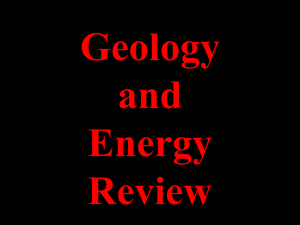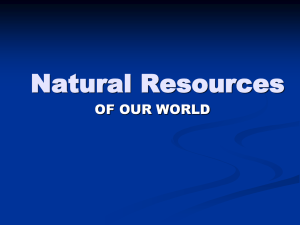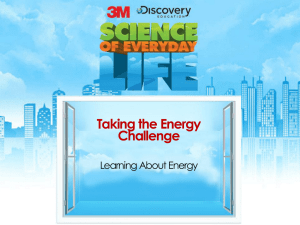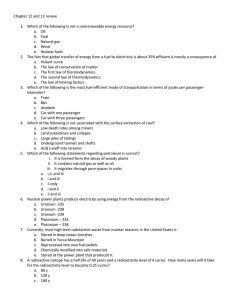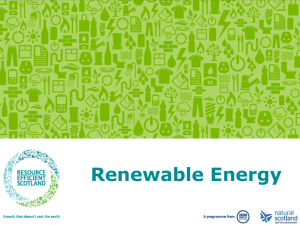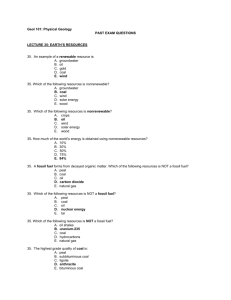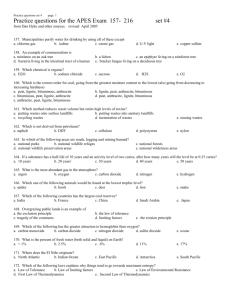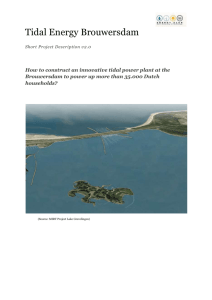Ch 4 2 Alternate Energy Sources
advertisement
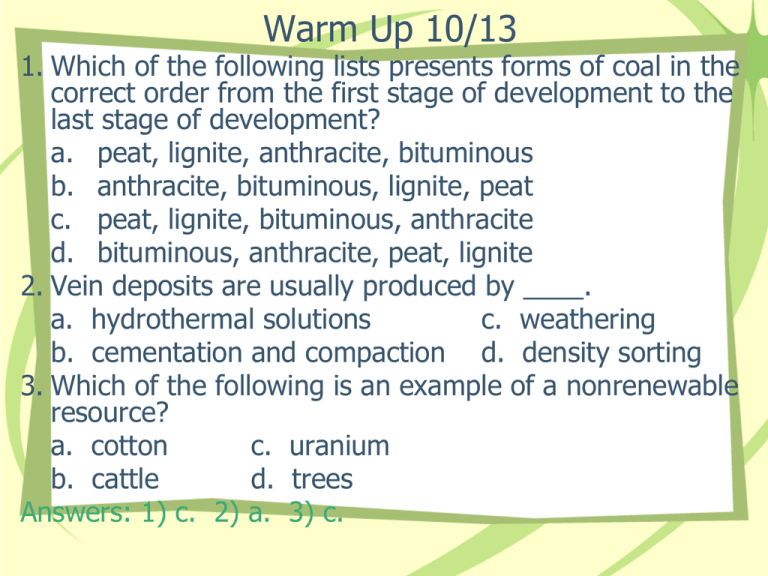
Warm Up 10/13 1. Which of the following lists presents forms of coal in the correct order from the first stage of development to the last stage of development? a. peat, lignite, anthracite, bituminous b. anthracite, bituminous, lignite, peat c. peat, lignite, bituminous, anthracite d. bituminous, anthracite, peat, lignite 2. Vein deposits are usually produced by ____. a. hydrothermal solutions c. weathering b. cementation and compaction d. density sorting 3. Which of the following is an example of a nonrenewable resource? a. cotton c. uranium b. cattle d. trees Answers: 1) c. 2) a. 3) c. Alternate Energy Sources Chapter 4, Section 2 Solar Energy • Every second, the total energy Earth receives from the sun amounts to more than 10,000 times the total energy used by all human societies in a day • Solar energy technologies use the sun’s rays to supply heat or electricity • Solar energy has two advantages: The “fuel” is free, and it’s non-polluting • There are a few drawbacks to solar energy: the necessary equipment and installation is not free, and a supplemental heating unit is needed for the times when the sun is not out • Research is currently underway to improve the technologies for collecting sunlight Solar Energy Solar One outside Barstow, California Concept Check • What are the two main advantages to using solar energy? • The fuel is free and it is non-polluting! Nuclear Energy • Nuclear power meets about 7% of the energy demand of the U.S. • The fuel for nuclear plants comes from radioactive materials that release energy through nuclear fission • In nuclear fission, the nuclei of heavy atoms such as uranium-235 are bombarded with neutrons; the uranium nuclei then split into smaller nuclei and emit neutrons and heat energy • The neutrons that are emitted then bombard the nuclei of adjacent uranium atoms, producing a chain reaction • The heat energy drives steam turbines that turn electrical generators Nuclear Energy Fuel Pool San Onofre Nuclear Plant, California Concept Check • What is nuclear fission? • The splitting of an unstable nucleus of an atom into smaller parts, releasing large amounts of energy Wind Energy • Wind is not a new energy source, we have been using it for centuries to power sailing ships and windmills for grinding grain • In the year 2000, wind supplied a little less than one percent of California’s electricity • Some experts estimate that in the next 50 to 60 years, wind power could meet between 5 to 10 percent of the country’s demand for electricity • The need for technical advances, noise pollution, and the cost of large tracts of land in populated areas are obstacles to development Wind Energy Wind Turbines outside Palm Springs, California Hydroelectric Power • Like wind, moving water has been an energy source for centuries • Hydroelectric Power – the power generated by falling water • In the U.S., hydroelectric power plants produce about 5 percent of the country’s electricity • The water held in a reservoir behind a dam is a form of stored energy that can be released through the dam to produce electric power • Eventually rivers deposit sediment in the reservoir to a point where the dam can no longer produce electricity; this process takes approximately 50 to 300 years, depending on the amount of material the river carries Hydroelectric Power Glen Canyon Dam and Lake Powell, Arizona and Utah Border Geothermal Energy • Geothermal Energy – the energy that can be extracted from Earth’s internal heat, for example, natural steam used for power generation • Hot water is used directly for heating and to turn turbines to generate electric power • The reservoirs of steam and hot water occur where subsurface temperatures are high due to relatively recent volcanic activity • Geothermal power is clean but not inexhaustible, with the steam and hot water from individual wells usually lasting no more than 10 to 15 years Geothermal Energy The Geysers north of Santa Rosa, California Concept Check • In what two ways is geothermal energy used? • Directly for heating and to turn turbines to generate electricity Tidal Power • Tidal power is harnessed by constructing a dam across the mouth of a bay or an estuary in coastal areas with a large tidal range • The strong in-an-out flow that results drives turbines and electric generators • Tidal power development isn’t economical if the tidal range is less than eight meters or if a narrow, enclosed bay isn’t available • Tides will never produce a high portion of the world’s energy needs, but it is an important source at certain sites Tidal Power Assignment • Read Ch. 4, Sect. 2 (pg. 102-107) • Do Section 4.2 Assessment #1-6 (pg. 107)


